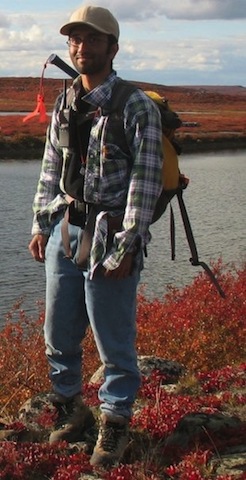Biography:
A road trip along the Columbia Icefields Parkway in 2005 sparked my interest in geology with the question: “What are these mountains and how did they get here?” This started my career in geology, which has involved a BSc, a short experience with industry, an MSc and an on-going PhD. Over the course of my experience, my original question has evolved into a much more general “What is the nature of the solid Earth and how has it come to be so?” After an MSc studying the source of Paleoproterozoic mafic dykes in the Northwest Territories, Nunavut and Saskatchewan, my current interest lies in understanding the growth of continents at active margins.
My preferred mode of answering these geological questions has been through the tools of geochemistry (elemental and isotopic; mineral and whole-rock) although I undertake (and greatly enjoy) occasional forays into the realms of structural geology, mapping and some statistical analyses. Over the course of my PhD I intend on adding experimental petrology to my geological toolbox. Aside from fulfilling my intellectual curiosities, my work in geology has complemented my other interests in hiking, photography, map making and singing ‘The Gambler’ in remote and beautiful places. As my career progresses I look forward to continuing to expand (and attempt to answer) my guiding question through research, teaching, public outreach and public education.
